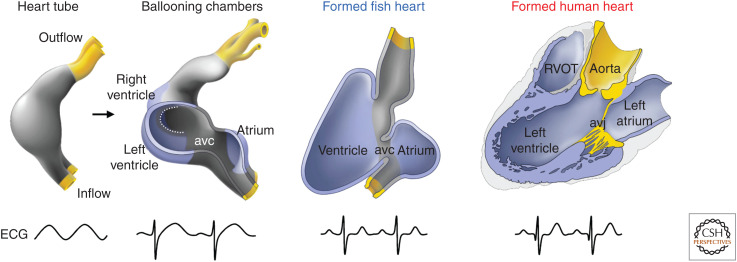Figure 1.
The building plan of the vertebrate heart. All vertebrate hearts develop from a heart tube with intrinsic pacemaking caudally and in which the electrical propagation is slow giving rise to a sinusoid electrocardiogram (ECG). During “ballooning,” chambers form locally on the outer curvature of the heart tube. Because fast electrical propagation is part of the chamber program, the heart now acquires alternate regions of slow and fast propagation and the resultant ECG is adult-like. Much of this configuration persists in the formed hearts of vertebrates from fish to human. Note that the chamber configuration of the chambered embryonic heart, fish heart, and adult human heart are essentially the same. (avc) Atrioventricular canal (myocardial), (avj) atrioventricular junction (most of the myocardium is disrupted by the insulating plane), (RVOT) right ventricular outflow tract. (Modified from Jensen et al. 2013, with permission, from Elsevier © 2013.)

